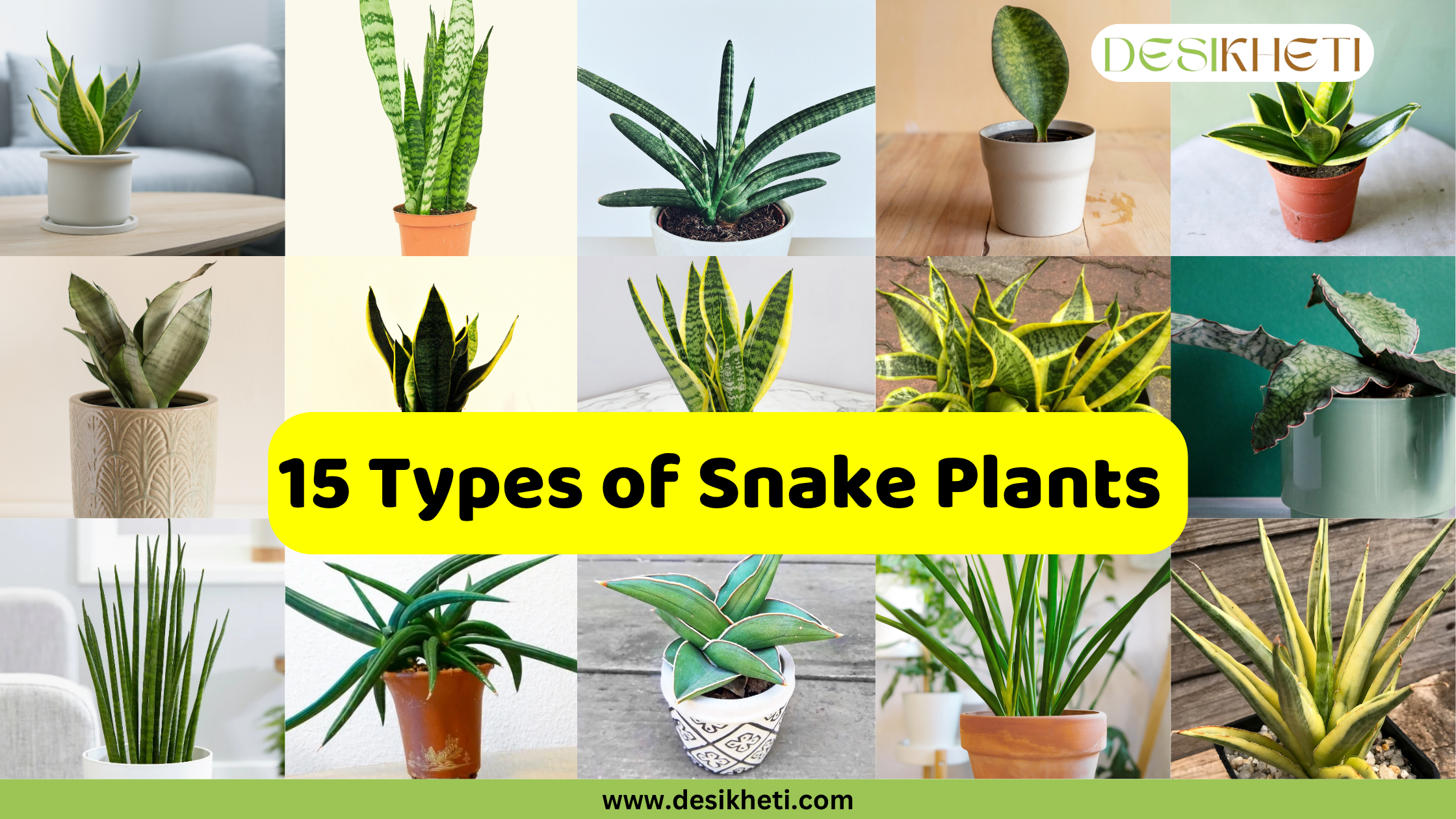Table of Contents
Introduction
Snake plants (Sansevieria spp.), also known as Mother-in-law’s Tongue, are among the most versatile and low-maintenance indoor plants perfect for Indian homes and offices. With their striking upright leaves, unique patterns, and remarkable air-purifying qualities, snake plants make an excellent addition to any indoor space.
From classic varieties like Sansevieria trifasciata to rare gems like Sansevieria ehrenbergii ‘Samurai Dwarf’, these hardy succulents thrive in a wide range of light conditions, require minimal watering, and are ideal for urban dwellers with limited time or space. Whether you’re looking for a bold statement piece or a compact tabletop companion, there’s a snake plant variety for every corner of your home or office.
In this blog, explore 15 unique types of snake plants along with their botanical names, key features, ideal placement, sunlight requirements, and more.
15 Snake Plant Types
Variegated Snake Plant

Botanical Name: Sansevieria trifasciata ‘Laurentii’
The Variegated Snake Plant is one of the most recognizable and popular snake plant varieties. It features upright, sword-like leaves with a rich dark green center and bold yellow margins. The leaves are stiff and flat with subtle horizontal banding. Indoors, it usually grows to a height of 2 to 3 feet and can reach up to 4 feet in optimal conditions.
It thrives in bright, indirect light but can easily adapt to low-light corners, making it ideal for living rooms, offices, or shaded balconies.
Uses and Benefits:
- Air-purifying plant
- Removes indoor toxins like benzene and formaldehyde
- Adds a strong decorative contrast with its yellow-edged foliage
Zeylanica Snake Plant

Botanical Name: Sansevieria trifasciata ‘Zeylanica’
This elegant variety features long, sword-shaped leaves with dark green tones and soft, wave-like silver-green markings. It grows upright, usually reaching 2 to 3 feet in height. Snake Plant Zeylanica is ideal for bedrooms, corridors, or office corners. It tolerates low to moderate indirect sunlight and can also be kept outdoors in semi-shaded areas.
Uses and Benefits:
- Removes toxins like formaldehyde and xylene from the air
- Blends well with modern and rustic home aesthetics
- Low-maintenance
Cylindrical Snake Plant

Botanical Name: Sansevieria cylindrica
This unique snake plant stands out with its cylindrical, spear-like leaves that rise upright from the base. The smooth, rigid leaves are usually dark green with faint horizontal stripes. It typically grows in dense clusters and can reach 2 to 3 feet or more when grown outdoors in warm climates. Thanks to its sculptural form, it’s ideal for modern interiors, lobbies, or decorative planters in offices.
Uses and Benefits:
- Adds an architectural, contemporary feel to spaces
- Beginner-friendly
Whale Fin Snake Plant

Botanical Name: Sansevieria masoniana
This striking variety is named for its large, paddle-shaped leaves that resemble a whale’s fin. The leaves are thick, wide, and feature a mottled green pattern with slightly wavy edges. Typically, it grows as a single rosette or in small clumps, reaching up to 3 feet in height with leaves nearly a foot wide.
It’s best suited for indoor spaces as a bold, eye-catching focal point. The Whale Fin prefers bright, indirect light but can handle low-light conditions.
Uses and Benefits:
- Excellent at filtering indoor air pollutants
- Makes a dramatic statement in decorative planters
Bird’s Nest Snake Plant
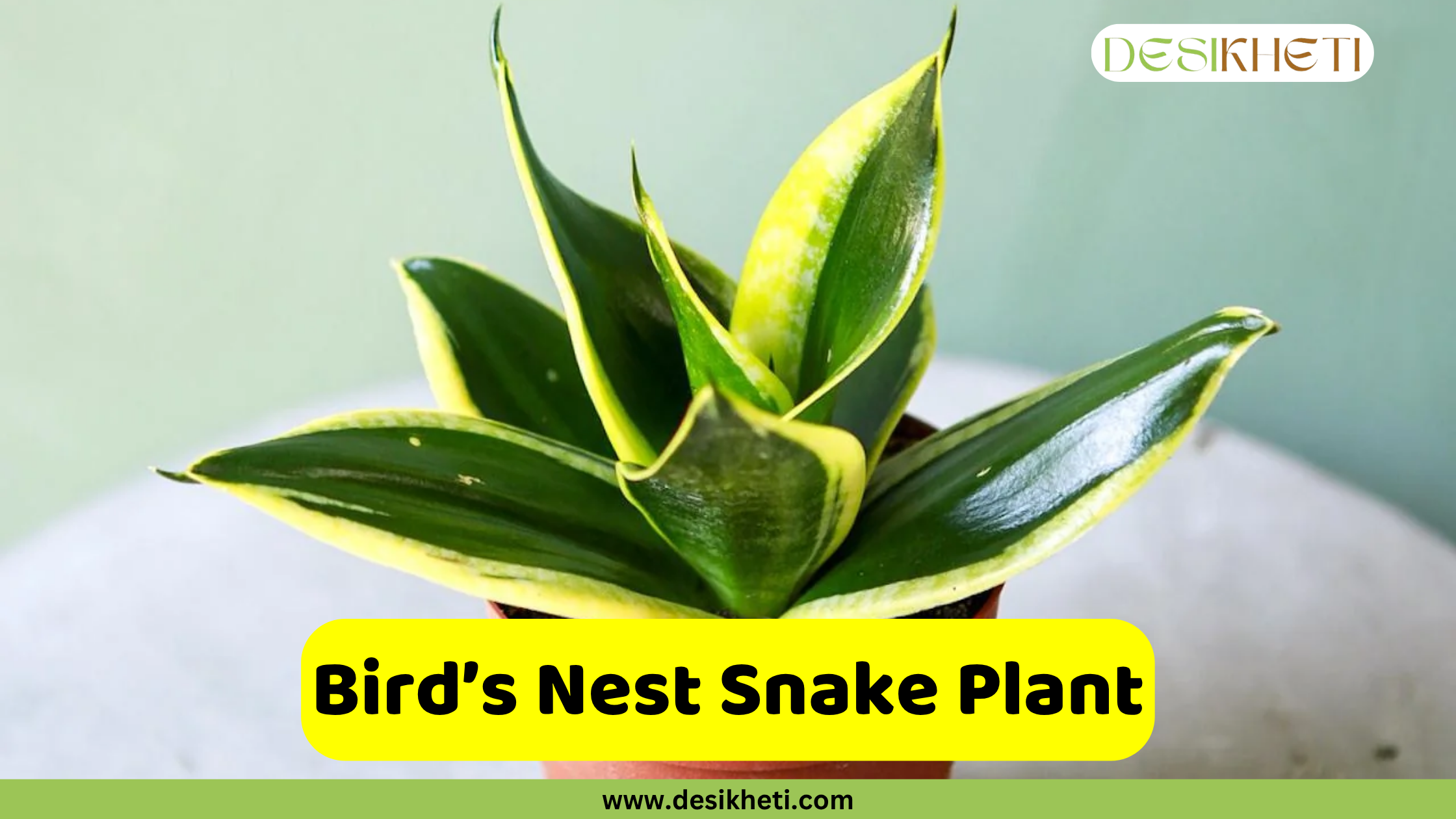
Botanical Name: Sansevieria hahnii
This compact, dwarf variety forms a neat rosette of short, broad leaves that resemble a bird’s nest. The leaves are dark green with light horizontal striping and sometimes edged with yellow.
It tolerates low light and prefers indirect light. It stays small around 6 to 8 inches in height making it an excellent choice for limited spaces. Perfect for desktops, bookshelves, and tabletops.
Uses and Benefits:
- Excellent choice for work desks and small corners
- Requires very little space and upkeep
Moonshine Snake Plant

Botanical Name: Sansevieria trifasciata ‘Moonshine’
This variety stands out with its broad, smooth leaves in a silvery-green hue, almost metallic in appearance. The foliage has a pale and uniform coloration with subtle horizontal bands, giving it a sleek, modern aesthetic. It grows upright and typically reaches 1.5 to 2.5 feet in height.
Moonshine Snake Plant thrives in bright indirect light but can adapt to slightly shaded areas. It’s an excellent choice for indoor spaces such as living rooms and bedrooms.
Uses and Benefits:
- Complements contemporary, minimalist interiors
- Low-maintenance
Black Gold Snake Plant

Botanical Name: Sansevieria trifasciata ‘Black Gold’
The Black Gold Snake Plant is known for its dramatic dark green leaves outlined with bright golden-yellow borders. The upright, sword-shaped leaves have a glossy texture, giving it a luxurious appearance.
It usually grows to about 2 to 3 feet in height. Ideal for both homes and offices, this variety grows well in bright, indirect light but can handle low-light areas as well.
Uses and Benefits:
- Enhances indoor air quality
- Offers striking contrast and color in decorative arrangements
Futura Superba Snake Plant
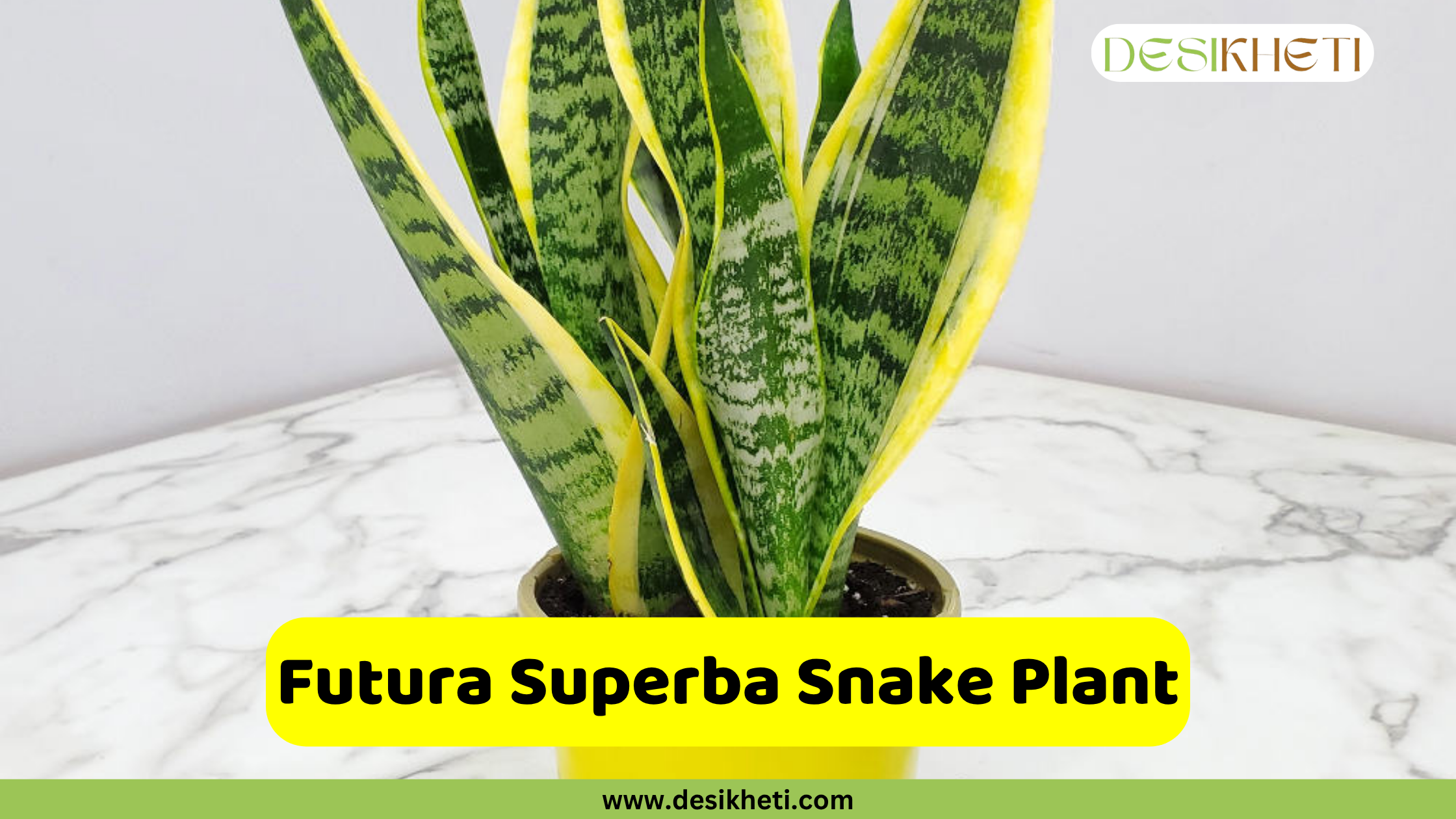
Botanical Name: Sansevieria trifasciata ‘Futura Superba’
This compact version of the variegated snake plant has dark green leaves with bright yellow edges and light horizontal striping. The leaves are shorter and broader. It generally grows up to 1.5 to 2 feet in height.
It’s a great fit for indoor shelves, corners, or countertops and can be placed outdoors in partial shade. The plant prefers bright, indirect light but handles low-light conditions with ease.
Uses and Benefits:
- Removes airborne pollutants effectively
- Compact size
Twisted Sister Snake Plant
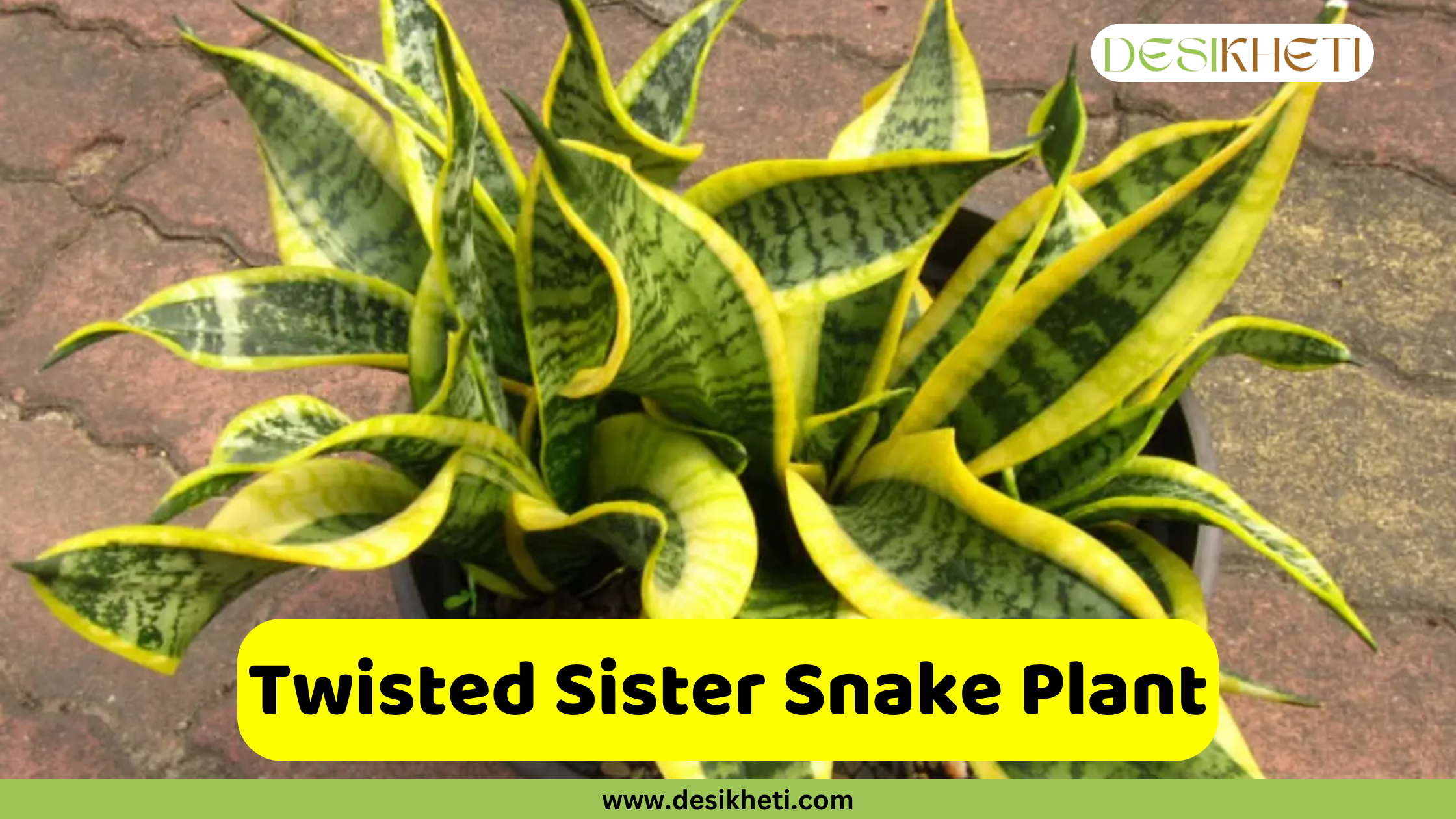
Botanical Name: Sansevieria trifasciata ‘Twisted Sister’
Twisted Sister is known for its distinctively curled and twisted leaves. The foliage has a striking combination of bright yellow margins and deep green centers with subtle banding. Its rosette-like structure and spiral growth pattern give it a unique and eye-catching look, making it perfect for modern and creative interiors.
Due to its small size typically growing up to 1 to 2 feet tall it is ideal for desks, bookshelves, or coffee tables. It prefers bright, indirect sunlight but adapts well to lower light conditions.
Uses and Benefits:
- Helps remove indoor air pollutants like benzene and formaldehyde
- Compact size fits well in limited spaces
Star Snake Plant
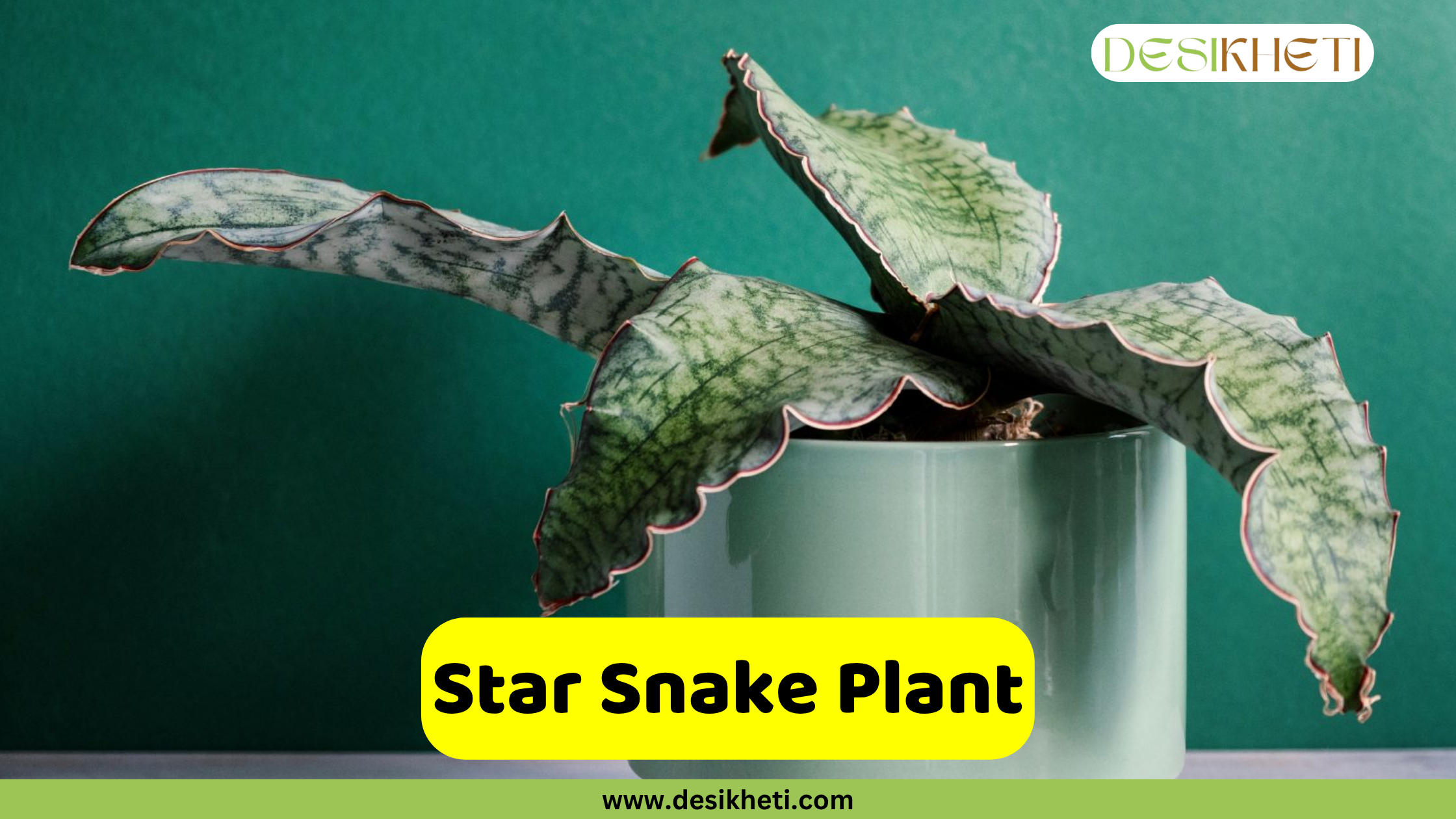
Botanical Name: Sansevieria kirkii
Star Sansevieria, also known as Kirk’s Snake Plant, is distinguished by its thick, broad, lance-shaped leaves that spread out in a star-like pattern. The leaves are mottled with dark and light green patches, often with slightly wavy or serrated edges, giving it a rugged yet ornamental appeal.
It typically grows up to 2 to 3 feet tall and thrives in indoor locations with moderate to bright indirect light. Outdoors, it prefers warm, shaded areas.
Uses and Benefits:
- Adds volume and a unique shape to plant displays
- Low-maintenance
Rod Snake Plant

Botanical Name: Dracaena bacularis
Rod Sansevieria features slender, cylindrical, upright leaves that resemble rods or sticks, giving the plant a sleek, minimalist appearance. The dark green leaves sometimes show faint banding, and their compact, vertical form makes the plant a favorite in modern decor themes.
This plant grows to a height of 1.5 to 2.5 feet and is best placed indoors where it receives bright, indirect sunlight. It can also thrive outdoors in warm, semi-shaded areas.
Uses and Benefits:
- Complements minimalist, modern home décor
- Easy to care for
Patens Snake Plant

Botanical Name: Sansevieria patens
Sansevieria patens have thick, broad, bluish-green leaves with faint horizontal markings and sharp, pointed tips. The leaves grow upright in a loose, open clump and spread slightly outward, creating a bold, textural presence in any setting.
It grows up to 2 to 3 feet in height and prefers indoor environments with moderate to bright indirect sunlight. It also does well in shaded outdoor spaces in tropical or subtropical climates.
Uses and Benefits:
- Helps clean the air
- Brings a lush, textured look to interior plant arrangements
- Thrives with minimal care
Samurai Dwarf Snake Plant
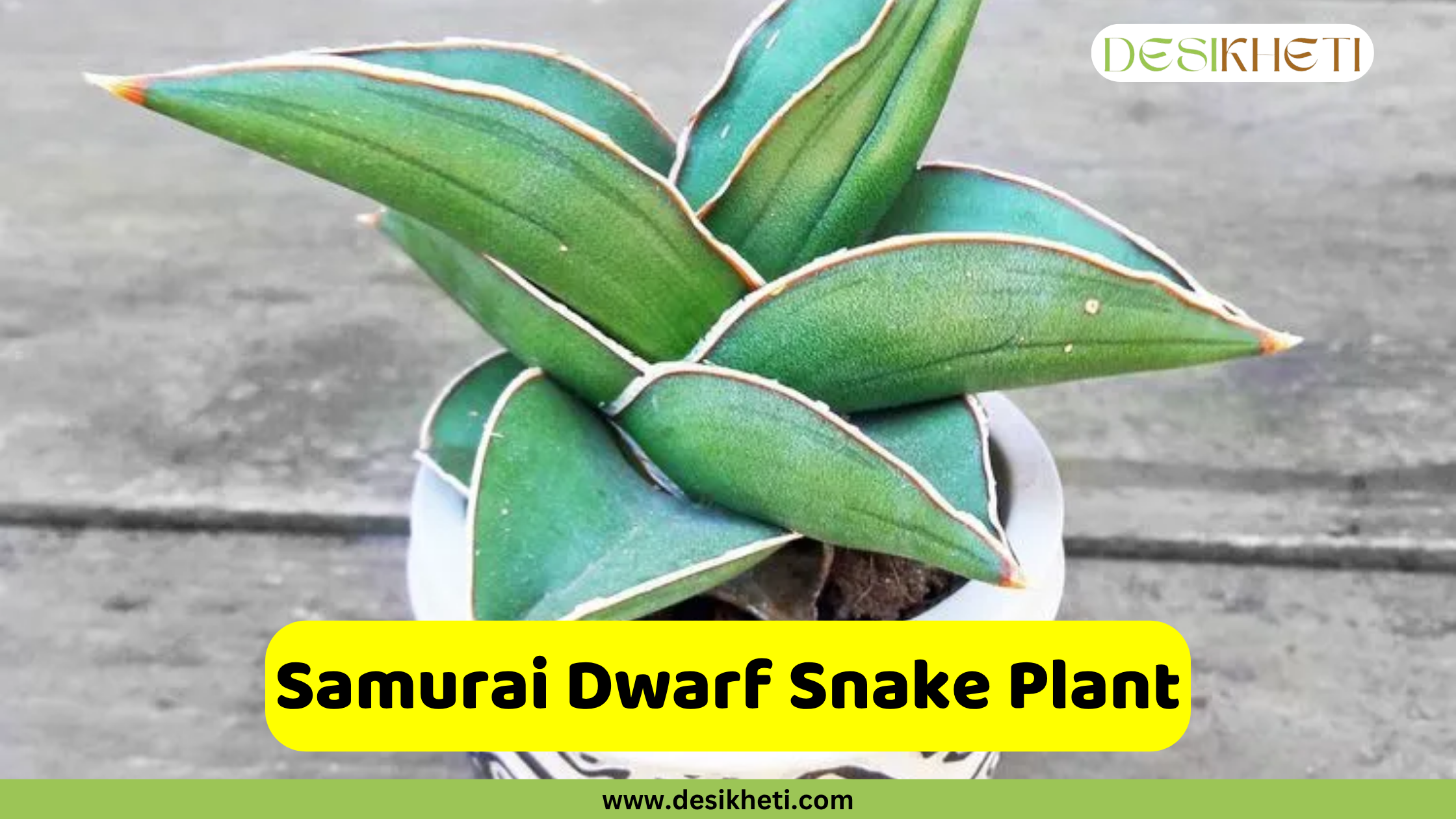
Botanical Name: Sansevieria ehrenbergii ‘Samurai Dwarf’
This compact variety features thick, short, dark green leaves arranged in a stacked, fan-like formation. The leaves are sturdy, sword-shaped, and edged slightly with reddish margins.
Typically reaching just 1 to 1.5 feet in height, this plant is well-suited for desks, countertops, or small corners. It prefers bright, indirect light but can also handle low-light spaces.
Uses and Benefits:
- Compact and bold perfect for small decorative planters
- Requires very little maintenance
Parva Snake Plant

Botanical Name: Sansevieria parva
The Parva Snake Plant is known for its slim, upright leaves that are dark green with fine, lighter horizontal stripes. The foliage grows in a tidy clump and points upward, adding a sleek, vertical element to plant arrangements. It usually grows between 1.5 to 2 feet tall and performs best in indoor spaces with bright, indirect light.
Uses and Benefits:
- A great vertical accent for narrow spaces or shelves
- Minimal upkeep
Graceful Snake Plant

Botanical Name: Sansevieria gracilis
This plant has curving green leaves that grow upright in elegant clusters. The leaves may display soft mottling or faint bands, and their delicate form makes them a charming addition to any space.
This variety grows up to 1.5 to 2 feet tall and is ideal for indoor settings with bright indirect light. It can also be placed outdoors in warm, shaded spots.
Uses and Benefits:
- Improves indoor air quality by filtering pollutants
- Ideal for compact spaces and delicate interior styling
- Low-maintenance
Other Snake Plant Varieties
- Eilensis Snake Plant
- Channel-Leaf Snake Plant
- Aubryt’s Snake Plant
- Concinna Snake Plant
- Starfish Snake Plant
- White Striped Snake Plant
- Cleopatra Snake Plant
- Night Owl Snake Plant
- Silver Blue Snake Plant
General Growing and Care Tips for Snake Plants
- Light: Snake plants thrive in bright, indirect light, but they are highly adaptable and can tolerate low light and partial shade. Avoid intense direct sunlight for prolonged periods, as it may scorch the leaves.
- Water: Water only when the soil is completely dry. Overwatering is the most common reason for snake plant failure. In general, water every 2–3 weeks, and even less during winter. Always use pots with drainage holes to avoid root rot.
- Soil: Use a well-draining potting mix. A cactus or succulent mix is ideal. You can also mix regular potting soil with perlite or coarse sand to improve drainage.
- Temperature: The ideal temperature range is 15–29°C (60–85°F). Snake plants are not frost-tolerant. Avoid exposing them to temperatures below 10°C (50°F).
- Humidity Snake plants prefer average indoor humidity. They are tolerant of dry air, making them excellent for indoor environments.
- Fertilizer: Feed with a balanced, diluted liquid fertilizer (half strength) once a month during the growing season (spring and summer). Avoid fertilizing in winter.
- Pruning: Prune to remove damaged or yellowing leaves at the base using clean shears. Pruning also encourages new growth and helps maintain shape.
- Repotting: Snake plants grow slowly and need repotting only every 2–3 years or when root-bound. Choose a slightly larger pot with good drainage.
- Pests: Watch for mealybugs, spider mites, and scale insects. Treat early with neem oil or insecticidal soap if pests are noticed.
- Toxicity: Snake plants are toxic to pets and humans if ingested. They may cause nausea or gastrointestinal upset.
Whether you’re a beginner or an experienced plant lover, snake plants offer the perfect combination of beauty, durability, and benefits. Each variety from the bold and tall Sansevieria trifasciata to the graceful and compact Sansevieria gracilis brings a distinct charm to your interiors while quietly improving air quality and energy flow.
Thanks to their drought resistance and adaptability to different lighting, snake plants are a perfect fit for Indian homes be it your balcony, living room, or office desk. Choosing the right variety can help you create a peaceful, green sanctuary that’s both stylish and beneficial.
FAQs on Snake Plants
1. What are the benefits of Sansevieria?
A. Sansevieria improves air quality, is low-maintenance, and adds aesthetic value. It can survive low light, needs little water, and tolerates neglect making it ideal for homes and offices.
2. Does Sansevieria purify air?
A. Yes, Sansevieria is known to purify air by removing toxins like formaldehyde, benzene, and xylene, according to NASA studies.
3. Does Sansevieria release oxygen at night?
A. Yes, Sansevieria performs CAM photosynthesis, meaning it releases oxygen at night making it great for bedrooms.
4. How much sunlight does Sansevieria need?
A. Sansevieria prefers indirect to moderate sunlight, but it can also tolerate low light and some direct sunlight.
5. What kind of soil does a Sansevieria need?
A. Sansevieria needs well-draining, sandy soil to prevent root rot.
6. What is another name for Sansevieria?
A. Sansevieria is also commonly known as the Snake Plant or Mother-in-law’s Tongue.
7. What are some interesting facts about Sansevieria?
- It’s one of the best air-purifying indoor plants.
- It can survive weeks without water.
- It is one of the few houseplants that produce oxygen at night.
- It is toxic to pets if ingested.
